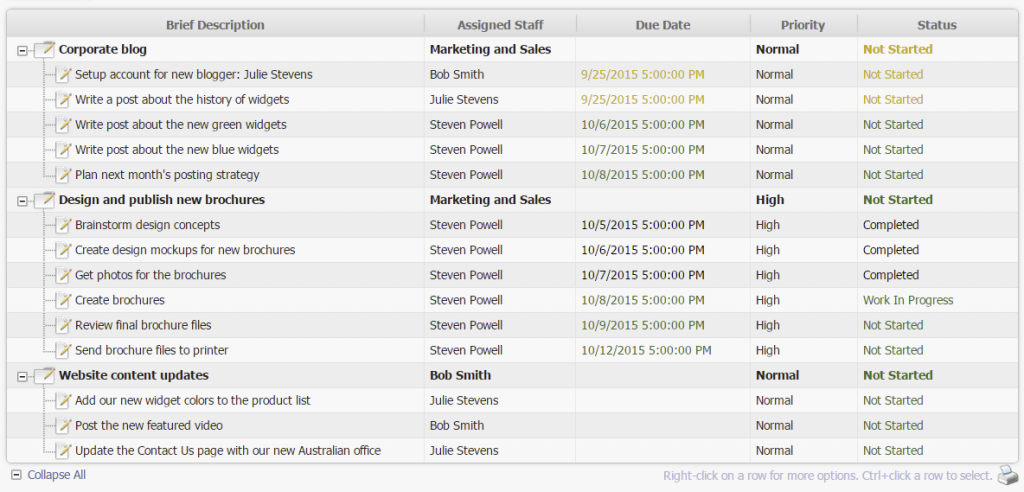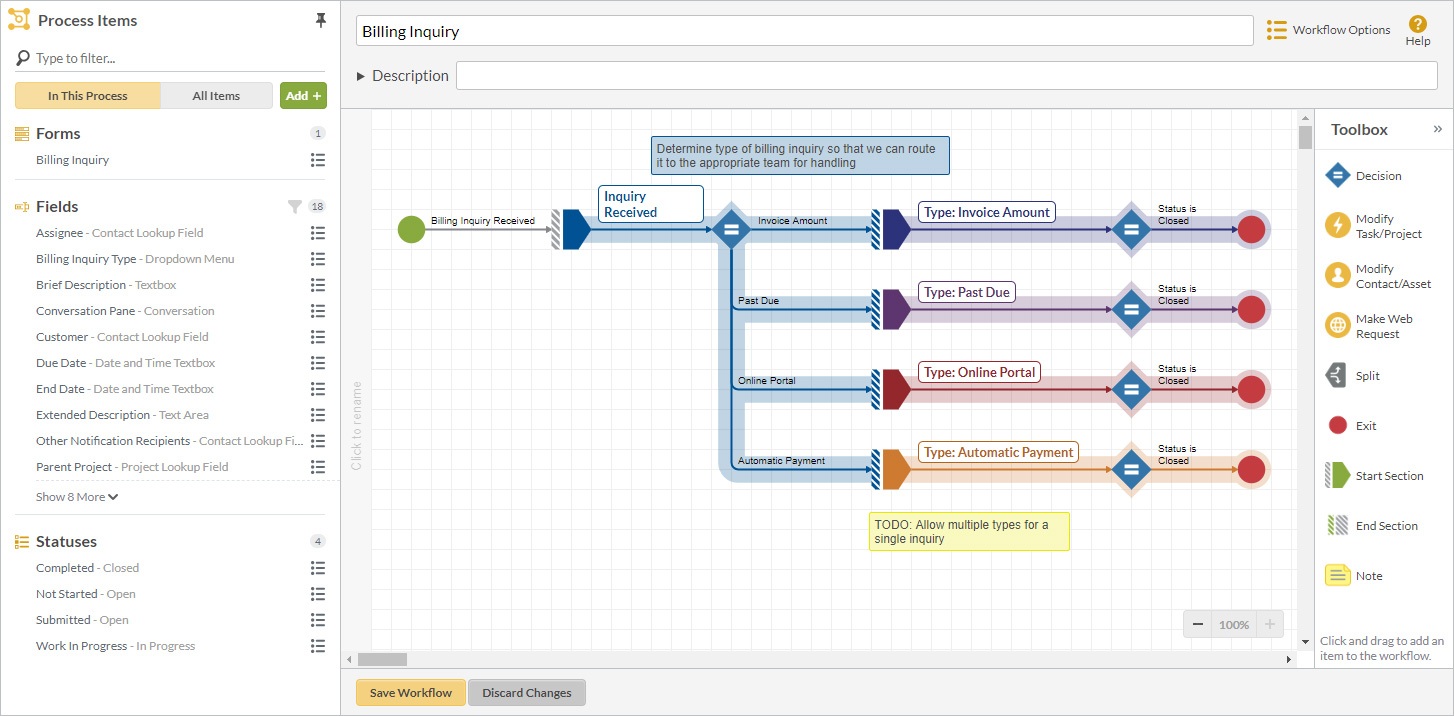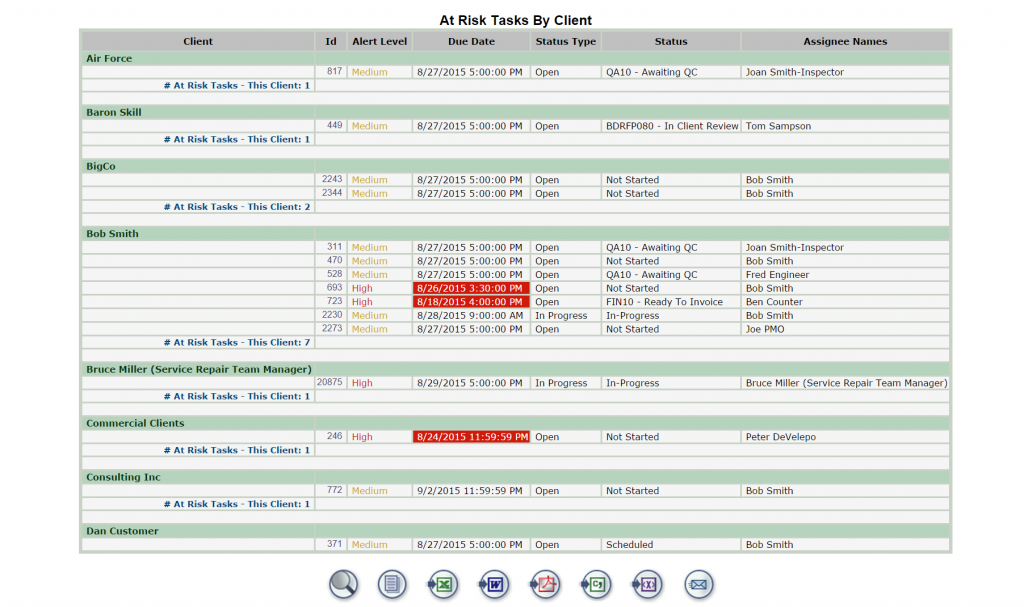Undertaking a Business Process Management initiative can, and usually is, a long road with a great deal of hard work, lots of moving parts, and frequently unseen, uncharted territory to traverse. While this is certainly the case with traditional BPM deployments, it does not have to be so painful or slow. The perception of slow deployment and adoption, combined with cost, and a less than spotless record of success may account for why so many organizations have yet to adopt a BPM solution, even amongst the enterprise-class.
We’re going to take a look at the major issues with undertaking a BPM initiative, and what we at HighGear consider the most important guidelines to follow.
I think the first issue to be tackled is that there is no such ‘thing’ as BPM.
BPM is a mindset, a philosophy, or perhaps a business approach to creating and managing business processes. As such, BPM utilizes a wide range of tools and techniques to achieve its objectives, and typically this means deploying a BPMS (BPM Suite or BPM Software). But a deployed BPMS does not mean you are ‘doing’ BPM.
Undertaking a BPM initiative requires the adoption of a common set of organizational practices and a shared outlook and mentality.
Gain Executive Buy-in
Obtaining senior support may pose the greatest challenge you face with BPM.
Soliciting support is not likely to be as simple as requesting and getting a senior executive to put this on their list of projects. BPM requires a fundamentally different way of looking at an organization, moving perception from departmental or functional silos to seeing how the business operates through a process lens.
You are going to have to work out how to articulate this to your senior leadership.
You are also likely to encounter resistance beyond your ability to justify the merits of your business case too. BPM has emerged in the last 10 years as potentially very successful when seeking to create competitive advantage, sustaining and improving Customer Experience (CX), reducing costs, improving performance, working with Lean & Six Sigma, and so on.
However this has not always been the case, and many senior leaders today have very likely encountered BPM in their past (though it may not have been referred to as BPM at that time). You’ll need to overcome the obstacle of prior negative experience, not simply sell BPM on the positives.
[For further reading I recommend Laurence Goasduff’s post on the Gartner blog, “Getting Business Leader Buy-In for BPM“]
Historically, why has BPM failed?
To help you plan in advance for handling senior management objections, here are some common historical reasons for BPM failure:
- Lack of Innovative Thinking – failing to fully embrace BPM and ‘tinkering’ at the task-level with automation, but without fundamentally addressing the how or why work is done in a particular way. This means nothing innovative is uncovered and the ability of BPM to deliver expected results is restricted.
- BPM Empire Building – BPM is frequently the afterthought to existing, mature business disciplines such as Project Management, Applications Development, and Enterprise Architecture. However, while BPM seeks to drive performance through improving processes which traverse departmental boundaries, and promotes breaking down siloes, BPM practitioners frequently seek to impose their own siloes to oversee and manage processes. Politically and practically, this does not work very well with incumbent management of existing disciplines.
- BPM Bottlenecks – the BPM team itself becomes a bottleneck to progress because they are doing the legwork themselves.
- Process Standardization – one size does not fit all, but process standardization is one of the major selling points for BPM. Process standardization is highly desirable, but within limits that do not stop the exceptions from being serviced, nor results in a straitjacket that stifles process or business innovation. Modified or new processes also need to be adopted by the workers themselves, otherwise you are simply encouraging the development of shadow processes (see this post on DMAIC and Control).
- Focusing on Efficiency rather than Effectiveness – there is a limit on how efficient your organization can be, and if you make this your BPM focus you will be bound by this limitation. Focus on being effective, because there is no ceiling on effectiveness, and this is a more constructive and positive way to looking at processes.
[I recommend following Gartner analyst, Elise Olding on this subject and credit is due to her for summarizing common reasons for BPM failure.]
Create a Lucid, Well-Defined Business Case
This may sound like Business 101, but failing to justify the benefits of BPM guarantees the initiative is a non-starter.
A well thought out business case not only serves to deliver the business justification for going forward, but also acts as the foundational document for the entire initiative.
It is essential in my view to include detailed analysis of the following two areas:
- The main areas of concern with existing business processes, and address the main areas of concern, typically revolving around cost, inefficiencies, lack of visibility and accountability, compliance and regulatory issues, organizational impact, ability to improve upon CX, and build competitive advantage; and
- How will you proceed with improving existing processes, or creating new ones if required, and what are the goals associated with improvement? Cost estimation and resource allocation should be considered to achieve stated goals, with an indication of return on investment (ROI) or other acceptable financial measures your organization works with.

Create a Viable Roadmap
Your business case will help you create a roadmap for your BPM initiative, including breaking down all the prerequisite steps and tasks. Your roadmap acts as a guide not only for the people leading the BPM initiative, but also stakeholders, champions, and the people connected to the processes under consideration (both those who work directly with the process, and those who rely on its outputs).
Complex situations do not necessarily require a complicated roadmap. If you are tackling a set of processes into which there is little or no visibility, managed by memory, Post-it Notes, Excel spreadsheets, and email, then working on figuring out To Be states may be an exercise which leads to defeat simply because it is such a mess. In such circumstances, your roadmap goal may simply be to bring the Gordian Knot of a mess under control, gaining visibility into what is happening, and thereby bringing shadow processes into the light. Once visibility is achieved, measurement and improvement may then be made – you cannot improve what you cannot see (though John Hunter wrote this interesting piece countering this position on the Curious Cat Management Blog).
A roadmap is also highly recommended whenever you are looking at improving processes at the nexus of organization and customer; improving Customer Experience, or trying to gain a 360-degree view of the customer. A good roadmap will reduce or eliminate friction created by the business need to deliver customer requirements now, versus the need to implement BPM and the interruption this brings.
Your roadmap will also help you navigate cross-functional and cross-departmental politics, but probably it is most useful in managing the balance between the business and IT. In this regard, your roadmap will help you steer a path clear of an IT-led BPM initiative, which frequently leads to solutions IT thinks it can deliver, but which are not wanted or needed by the business in practice. Furthermore, an IT-led BPM initiative is usually weak on the delivery of the organizational mindset which is a prerequisite for BPM success.
[For further reading on this topic, I recommend Process in Practice “What Organizations Need is a BPM Roadmap with Clear Benefits” by Rob Davis, published in BP Trends]

Specific Goals to Consider
Achieving Operational Excellence (OpEX) is a key benefit from successfully implementing BPM, but BPM needs to successfully become the process modus operandi of the organization to deliver results. You will need to institute appropriate governance and metrics to measure effectiveness and efficiency, but do not neglect the human element of satisfaction too. Successful BPM takes into account the emotional element of the equation, as people meet processes, technology, and resources.
I strongly suggest you include within your explicit goals the following:
Agile BPM
We’re all familiar with the concept of being able to change swiftly, but without the loss of control and visibility that being agile may bring. I believe it is a good guess that we’re all equally familiar with how difficult it is to achieve agility in practice too.
Nevertheless, your BPM initiatives will need to be agile in that they will face frequent modification, and planning and implementation will be required to be very flexible and adaptable. How you bridge the gap between modeling/design and implementation is going to be a “make or break” issue for your initiative.
Empowering the Business to Change Proactively as Required
While thinking with a BPM mindset can be as liberating and unchained as the mind desires, implementing the right BPM tools, especially process automation, can either empower the business to perform at much higher levels, or place it into a strait jacket which stifles change and innovation.
BPM tools and thinking must be capable of being changed to meet the needs of the changing environment which the business operates within. This is not just an issue for customer-facing teams, but also for any business or function which is operating in a quickly changing environment, such as banking or healthcare where there are proactive regulators and complex compliance burdens.
Realistically, many businesses will need a flexible, easily and quickly changed BPMS in order to be able to build competitive advantage within their marketplace, and failing to deliver this will incorrectly result in the perceived failure of the BPM initiative itself.
Create a Business-led BPM initiative
I’m not going to engage in an IT-bashing exercise here as this is neither constructive nor fair, and as guardians of technology expertise you need them. However, the business must decide what it needs, driven by the demands it faces: the delivery of results is far more important than what technology is engaged to deliver them. Technology is an enabler for delivering practical reality from strategic thinking, not a creator of business strategy by itself.
IT-led BPM initiatives are technology driven, and the business may get what it does not need or want. Indeed, the technology meant to liberate and empower may become artificially constraining and force the business down pathways which do not deliver value. Business-led initiatives are more likely to focus on the customer, with the removal of tasks and processes which do not lead to improvement of CX or customer value.
Furthermore, technology-driven BPM tends to be inward looking in that it takes the business and wraps a shell around it (imagine a goldfish bowl with work being performed within it). This view is not congruent with modern business methods, where customers, external partners, and regulators, all need access to the artificial created ‘goldfish bowl’ of work and processes. An “Outside-In” approach provides opportunities for external ‘viewers’ to actively participate in the organization’s internal operational environment. This allows partners to be slotted into your processes where most appropriate, and without losing visibility and accountability into work being performed external to your business.

Summary
- BPM is not a thing – it is not software or technology – BPM is a management discipline for improving and managing business processes.
- BPM initiatives require the organizational adoption of a common mindset and set of practices in how we think about business processes and customer value.
- Obtaining senior executive buy-in may not be easy, but it is vital to success.
- Create a business case which will help you gain senior leadership buy-in, but also will act as the foundational document for your roadmap.
- Ensure you include the following as stated objectives for your BPM initiative:
- Deliver Agile BPM
- Empower the Business to Change as Needed
- Create a Business-led BPM Initiative driven by Customer and Business Need
